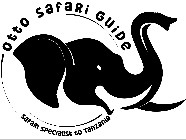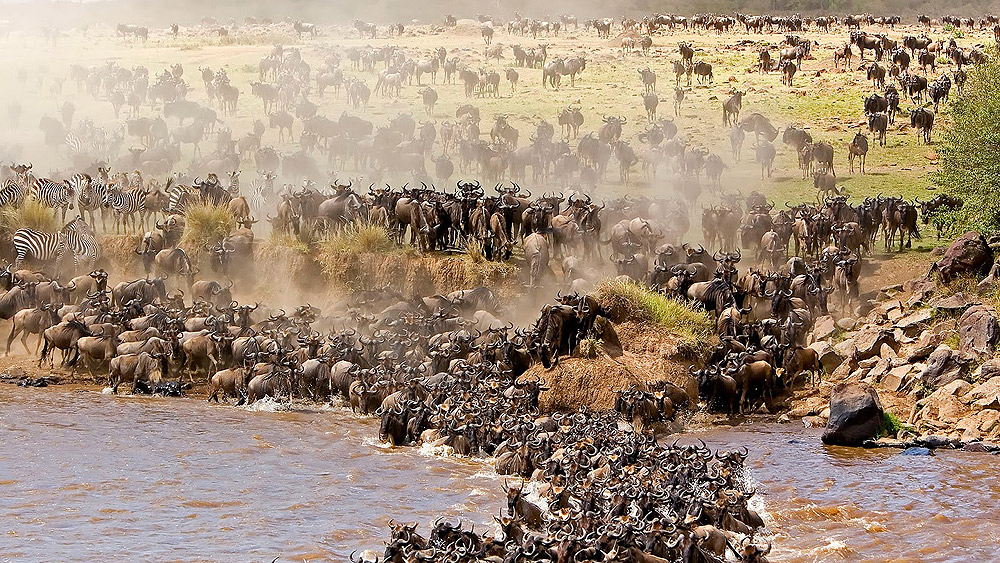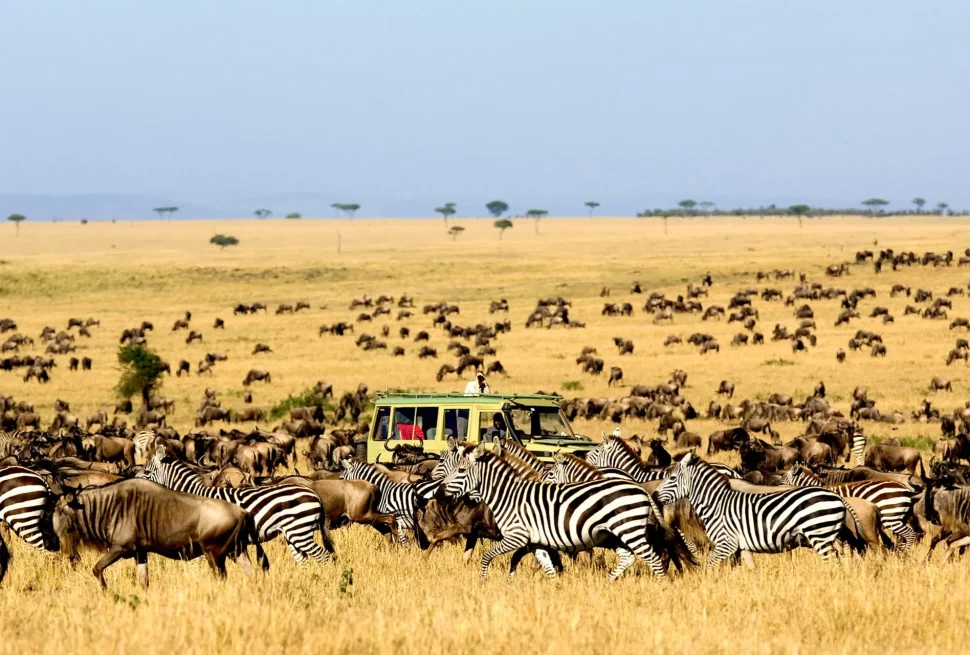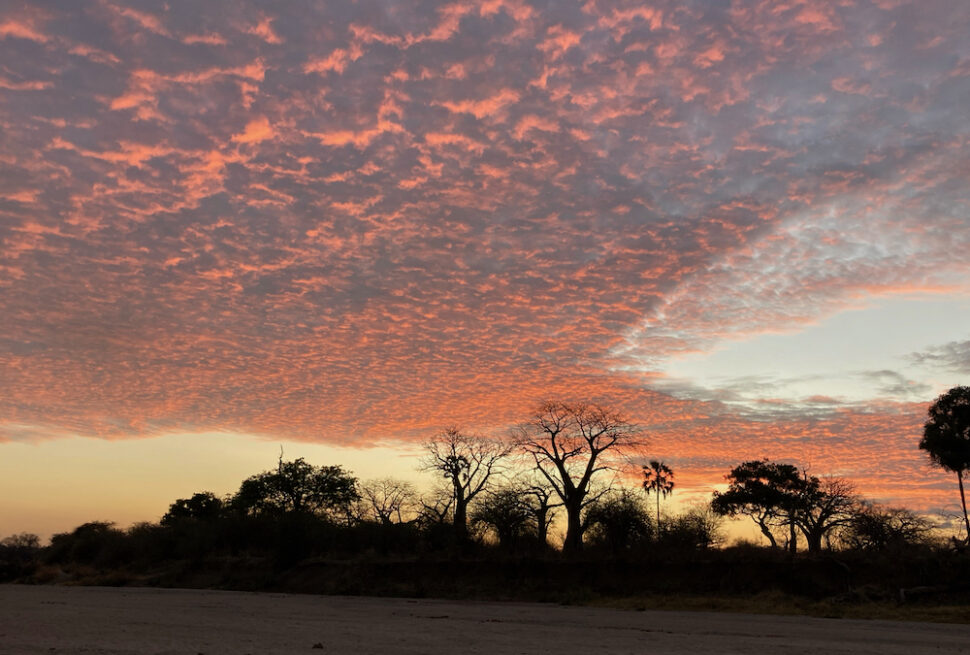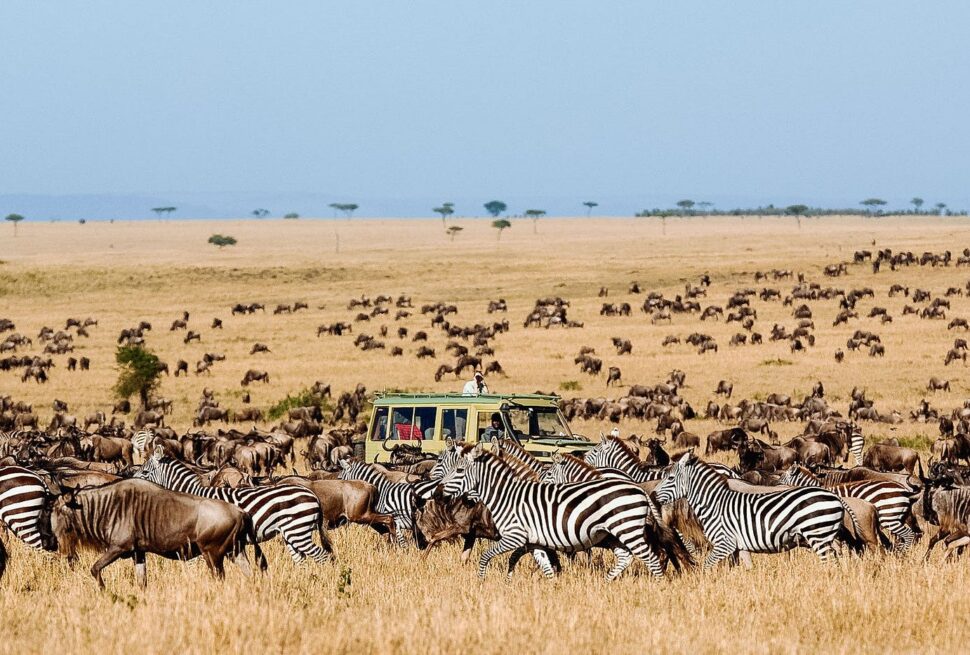Embarking on a Serengeti safari is an adventure of a lifetime, where the raw beauty of nature converges with the spectacular theater of wildlife. At the heart of this iconic safari destination is the famed wildebeest migration, a mesmerizing spectacle intricately woven into the fabric of the Serengeti’s seasons. To make the most of your safari, understanding the migratory cycle and choosing the right time to go is crucial. In this guide, we delve into the seasonal dynamics of the Serengeti, providing insights into the best times to witness this natural marvel.
Calving Season: January to March
The southern grass plains of the Serengeti come alive from January to March as the wildebeest embark on their migration, marking the entrance of the mega herd and the onset of calving season. This period is characterized by the birth of countless wildebeest calves, a heartwarming spectacle against the backdrop of the vast plains. Predators, including lions, leopards, cheetahs, and hyenas, are drawn to this abundance of vulnerable young prey. The sparse grasslands afford unobstructed views, making it an opportune time for cheetah sightings and the potential for witnessing predator-prey interactions. Allocate two or three days during your safari to immerse yourself in the captivating scenes of the migrating mega herd.
Seronera, Central Serengeti: April to July
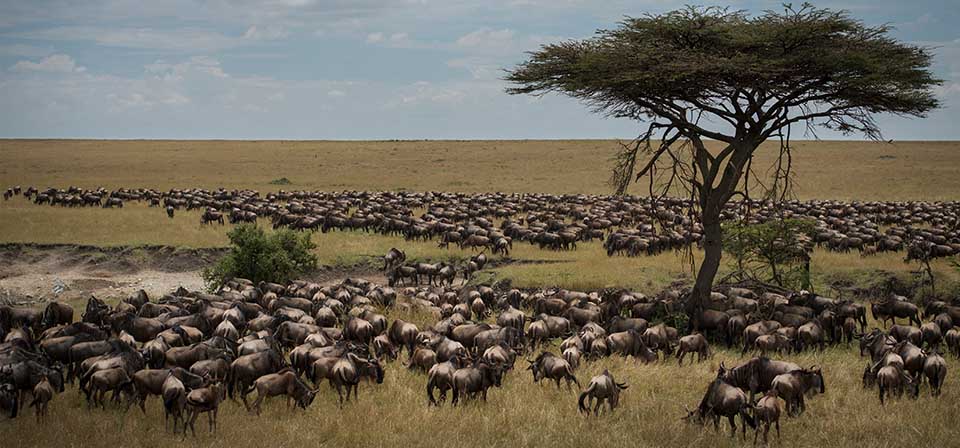
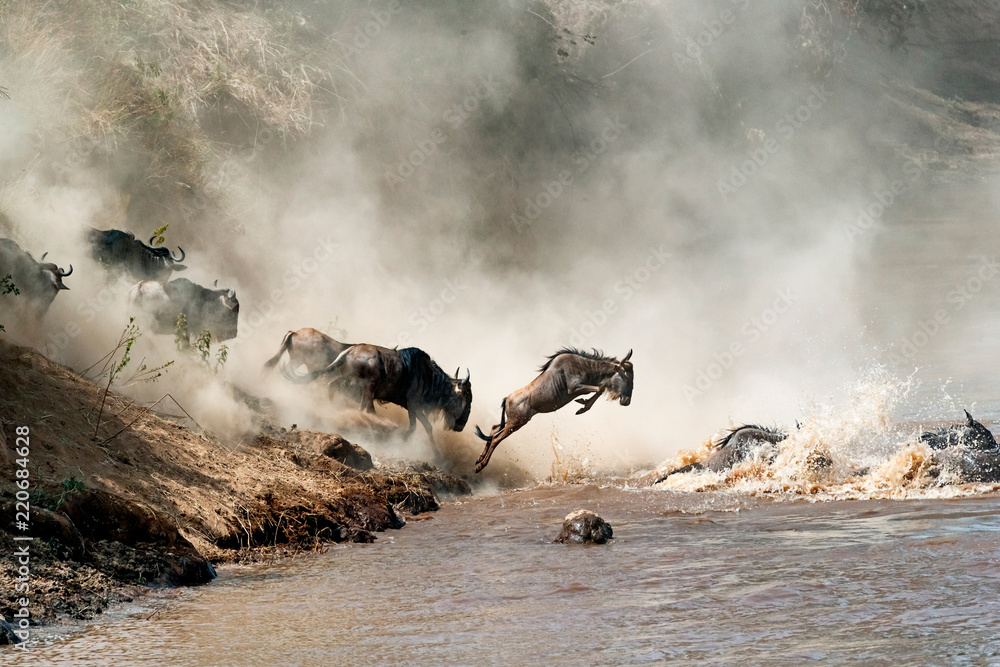
As the short grass plains begin to dry out, the herds migrate north, splintering into smaller groups. Seronera, situated in the central region of the Serengeti with perennial rivers, becomes a focal point. The presence of water sustains a thriving population of resident big cats, including lions, leopards, and cheetahs. The area also hosts a rich assortment of gazelles and antelopes, creating a diverse ecosystem. Seronera’s strategic location, combined with its year-round water supply, makes it an exceptional spot for game spotting throughout the year. Consider spending multiple days exploring this central Serengeti gem.
River Crossings in Kogatende, North Serengeti: August to September
As the dry season approaches, the migration progresses northward in search of higher ground and lusher pastures. The journey culminates in the world-renowned river crossings at the Mara River in Kogatende, North Serengeti. The anticipation builds as the herds converge along the riverbanks, preparing for the challenging crossing. The spectacle unfolds with wildebeest navigating steep drops, crocodile-infested waters, and the constant threat of lions and leopards. The river crossings are a breathtaking display of nature’s drama. This period offers a unique opportunity to witness various herds crossing at different times, thanks to the still-separate clusters within the migration.
Return to Seronera: October to December
Grass and water availability dictate animal movements, prompting a return to the Seronera region in the Serengeti’s central area. As the dry season progresses, rain-fed pools dry up, and grasses become sparser. The allure of Seronera lies in its abundance of grass due to multiple perennial water sources, attracting a concentration of wildlife. This region maintains a high density of resident large predators, reflecting the plentiful antelopes and gazelles in the area. Game drives in Seronera, regardless of the season, promise success, making it an ideal destination for exploration. Plan to spend at least two days to fully immerse yourself in the diverse wildlife encounters.
Crafting Your Perfect Serengeti Safari
At Otto Safari Guide Tanzania, we bring years of expertise to assist you in planning the perfect Serengeti safari. Understanding the intricacies of the migratory phenomenon, we can tailor your trip to align with the most captivating moments in the Serengeti. Whether you opt for a pre-designed migration itinerary or seek personalized assistance, our team is dedicated to ensuring your safari experience surpasses expectations. Download our example migration itinerary or reach out to us for bespoke guidance on crafting your Serengeti adventure. Your journey into the heart of the Serengeti awaits, promising an immersion into the unparalleled beauty of the wild.
